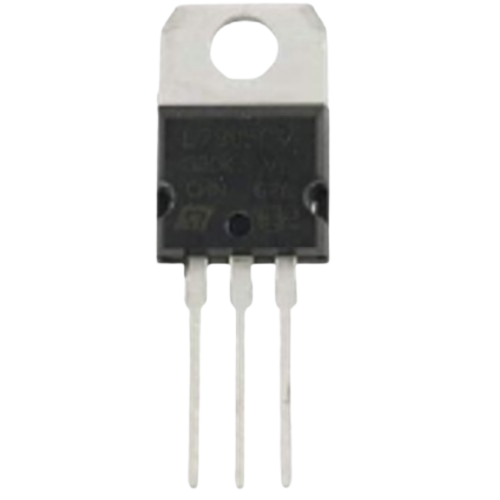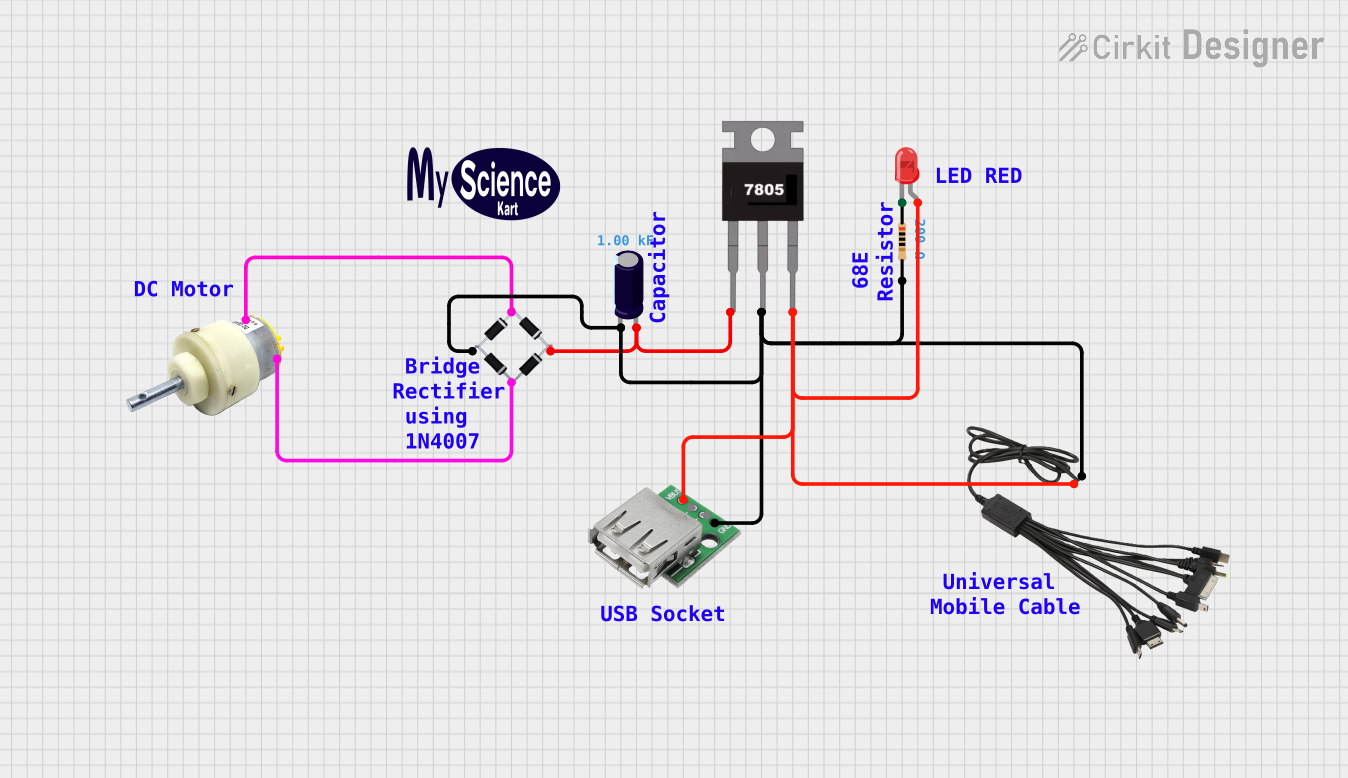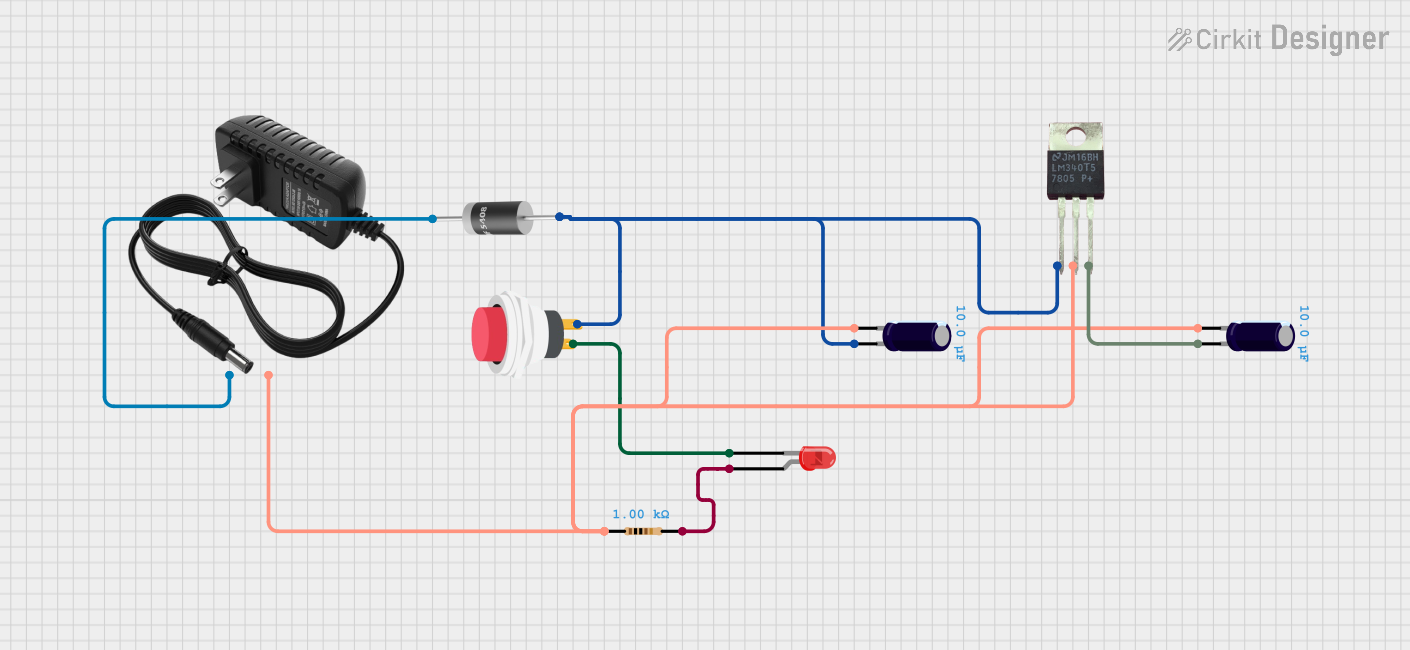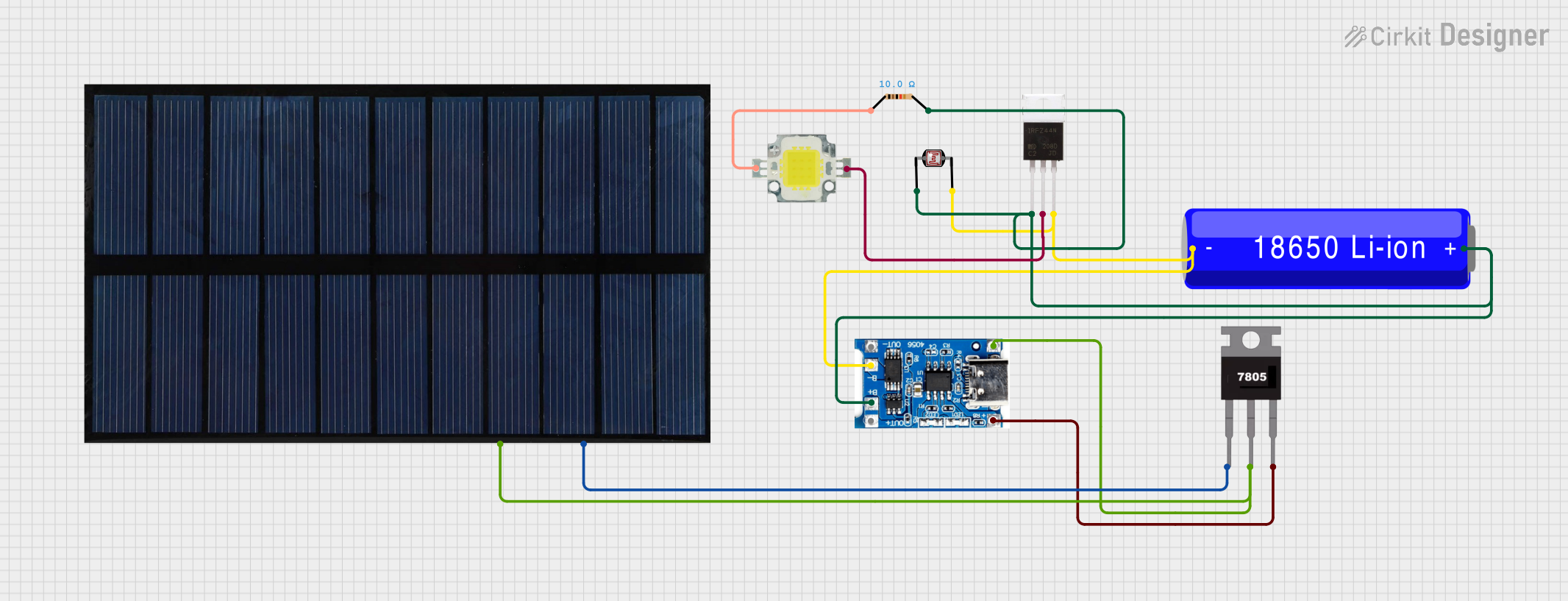
How to Use LM7805: Examples, Pinouts, and Specs

 Design with LM7805 in Cirkit Designer
Design with LM7805 in Cirkit DesignerIntroduction
The LM7805 is a widely used linear voltage regulator that provides a stable 5V DC output from a higher voltage input, typically in the range of 7V to 35V. It is a member of the 78xx series of fixed linear voltage regulators, which are designed to provide a constant voltage supply. The LM7805 is commonly used in a variety of electronic devices and projects, including power supplies, DIY electronics, and microcontroller-based systems such as those using Arduino UNO.
Explore Projects Built with LM7805

 Open Project in Cirkit Designer
Open Project in Cirkit Designer
 Open Project in Cirkit Designer
Open Project in Cirkit Designer
 Open Project in Cirkit Designer
Open Project in Cirkit Designer
 Open Project in Cirkit Designer
Open Project in Cirkit DesignerExplore Projects Built with LM7805

 Open Project in Cirkit Designer
Open Project in Cirkit Designer
 Open Project in Cirkit Designer
Open Project in Cirkit Designer
 Open Project in Cirkit Designer
Open Project in Cirkit Designer
 Open Project in Cirkit Designer
Open Project in Cirkit DesignerCommon Applications and Use Cases
- Powering 5V logic circuits
- Providing a stable power supply for microcontrollers and digital ICs
- Battery chargers
- DIY electronics projects
Technical Specifications
Key Technical Details
- Output Voltage: 5V
- Input Voltage (recommended): 7V to 25V
- Input Voltage (maximum): 35V
- Output Current (maximum): 1A
- Quiescent Current: 5mA
- Thermal Overload Protection: Yes
- Short Circuit Protection: Yes
- Operating Temperature Range: 0°C to 125°C
Pin Configuration and Descriptions
| Pin Number | Name | Description |
|---|---|---|
| 1 | Input | The input pin where the unregulated voltage is applied. |
| 2 | Ground | The ground pin connected to the system ground. |
| 3 | Output | The output pin that provides the regulated 5V. |
Usage Instructions
How to Use the LM7805 in a Circuit
- Connect the input voltage to pin 1 (Input) of the LM7805. Ensure that the input voltage is within the recommended range.
- Connect pin 2 (Ground) to the common ground of your circuit.
- The regulated 5V output can be taken from pin 3 (Output).
- It is recommended to place a 0.33uF ceramic capacitor between the input pin and ground to filter input noise.
- Additionally, a 0.1uF ceramic capacitor should be placed between the output pin and ground to improve transient response.
Important Considerations and Best Practices
- Always ensure the input voltage does not exceed the maximum rating to prevent damage.
- The LM7805 can dissipate heat during operation; consider using a heatsink for currents above 250mA or when the input voltage is significantly higher than 5V.
- Keep the input and output capacitors close to the regulator pins to minimize noise and oscillations.
Troubleshooting and FAQs
Common Issues Users Might Face
- Excessive Heat: If the LM7805 is too hot to touch, it may be dissipating too much power. Check the input voltage and current draw, and consider using a heatsink.
- Output Voltage Fluctuation: Ensure that the input and output capacitors are correctly installed. Also, check for any possible short circuits or overloads in the connected load.
Solutions and Tips for Troubleshooting
- No Output Voltage: Verify that the input voltage is present and within the specified range. Check for proper pin connections and solder joints.
- Inconsistent Output: Replace the input and output capacitors as they may be faulty or of incorrect value.
FAQs
Can I use the LM7805 without a heatsink? Yes, for low current applications (below 250mA) and when the input voltage is close to 7V.
What is the maximum current the LM7805 can provide? The LM7805 can provide up to 1A, but adequate heat dissipation must be ensured.
Is the LM7805 suitable for battery-powered applications? It can be used, but it is not the most efficient choice due to its linear regulation, which dissipates excess voltage as heat.
Example Arduino UNO Connection
// No specific code is required for the LM7805 as it is a hardware component.
// However, below is an example of how to connect the LM7805 to an Arduino UNO.
// Connect the LM7805 to the Arduino UNO as follows:
// LM7805 Pin 1 (Input) -> External Voltage Source (7V-25V)
// LM7805 Pin 2 (Ground) -> Arduino GND
// LM7805 Pin 3 (Output) -> Arduino 5V pin
// The Arduino can now be powered through the LM7805 regulator.
Note: When using the LM7805 to power an Arduino UNO, do not connect the Arduino's USB cable to a computer or other USB power source, as this may cause a conflict with the external power supply.